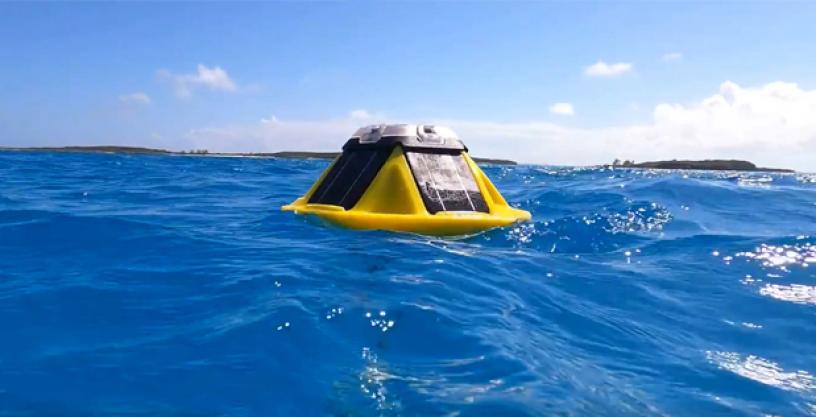
DARPA offers prize for algorithm that can accurately predict location of drifters 10 days into the future
Sep 24, 2021
Image credit: Sofar Ocean
It may come as a surprise that even with precise weather forecasting, supercomputers, satellites, and exquisite maritime sensing instruments we know very little about how currents move on the surface of the ocean. Models exist for subsurface ocean currents and weather activity above the surface, but the air-ocean interface is not a fully understood realm. Being able to accurately model the ocean’s surface currents could yield a variety of benefits such as more accurately predicting movement of an oil spill, supporting search and rescue operations for a man overboard or vessel adrift, and could even help with planning more efficient global shipping routes by circumnavigating areas with adverse currents.
As part of the Ocean of Things program – which uses low-cost distributed drifters for maritime situational awareness – DARPA is hosting a challenge called Forecasting Floats in Turbulence, or FFT. The challenge is designed to spur development of algorithms to better predict where free-drifting floats will travel over time.
“There’s currently no way to accurately predict where the proverbial message in a bottle thrown overboard in the open sea will be in a week’s time, let alone where it will eventually wash ashore,” said John Waterston, program manager for Ocean of Things in DARPA’s Strategic Technology Office. “Meso-scale models of ocean currents can give us a general direction the bottle will most likely drift, but we don't have a good understanding of the sub-mesoscale features that the bottle could get caught in, and drift in a completely new direction. The same thing holds true for the thousands of small, low-cost floats that form a distributed sensor network in Ocean of Things.”
Here’s how the competition will work: Starting with a training data set, DARPA will provide 20-days’ worth of historical drift data from a field of commercially available Spotters produced by Sofar Ocean, a performer on Ocean of Things. With roughly 90 Spotters circulating in the Atlantic, and 20 days of data, participants will need to train their algorithm or technique to predict where these spotters will be in 10 days.
DARPA and Sofar Ocean will provide the Spotters and data, but the data assimilation, statistical analysis, algorithms or methods are up to participants. Once competitors submit their prediction for the location of the 90 floats, DARPA and Sofar will provide float location updates every two days via web-based interface so competitors can see how closely the actual float locations are tracking against their 10-day prediction.
DARPA will award a total of $50,000 in the FFT challenge: $25,000 for first place, $15,000 for second place, and $10,000 for third place.
“The dynamics of the ocean surface is critical for global weather and climate, but inherently complex and difficult to predict. We created a planetary-scale distributed network of Spotters to help change this and open pathways to improve understanding,” Sofar CEO Tim Janssen said. “It’s incredibly exciting for us to partner with the team at DARPA to challenge teams to use this data to develop new approaches to accelerate ocean discovery and research. May the best idea win!”
To learn more about the FFT challenge and the virtual competitors’ day on October 7th visit: https://go.usa.gov/xMRUV. To register for the competitors’ day visit the registration site: https://cvent.me/8woye5.
# # #
Media with inquiries should contact DARPA Public Affairs at outreach@darpa.mil
Associated images posted on www.darpa.mil and video posted at www.youtube.com/darpatv may be reused according to the terms of the DARPA User Agreement.
Tweet @darpa
